To apply latex paint on metal, wash and clean the surface, prep the workspace, scrape the metal finish (if any), sand the metal, and apply primer and paint.
Latex paint isn’t water-resistant, so it won’t protect metal surfaces from moisture or water. So, you must seal the finish after it dries.
Can You Apply Latex Paint on Metal Without a Primer?
You can’t apply latex paint on metal without a primer as it won’t stick. Metal is a non-porous material and doesn’t allow latex paint to penetrate its surface, so the paint won’t stick.
Latex paint must penetrate a surface to stick, but since metal is non-porous and doesn’t allow penetrate, latex paint can’t penetrate and stick. So, you must apply a primer first.
Primers are formulated with extra additives to increase their bonding (adhesive) qualities and help them adhere to non-porous materials, such as metal.
The primer will stick over metal and produce a textured and even (flat) layer for the paint to penetrate and stick to. So, latex paint will penetrate and stick over the primer coating, not the metal surface.
How To Apply Latex Paint On Metal?
To apply latex paint on metal, do the following things.
- Wash And Clean the Surface.
- Prep the Workspace.
- Scrape the Metal Finish (If Any).
- Sand the Metal.
- Apply Primer.
- Apply Latex Paint.
The tools you need for this project are listed below.
- Water
- A metal scraper or wire brush
- Sandpaper
- Latex Paint
- Paintbrush
- Primer (optional)
Now let’s get to work.
1. Wash And Clean the Surface
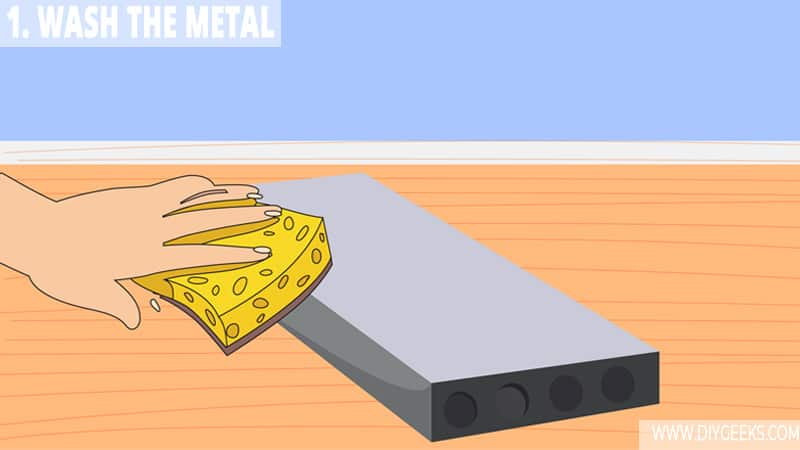
Wash and clean the metal surface to remove the filth and dust. If you don’t, the dust and filth will prevent the primer and paint from sticking and producing a smooth (and even) finish.
To wash and clean the metal surface, do the following things.
- Mix soap with warm water.
- Pour the soapy water over the surface and use a soft brush to scrub it.
- Once you clean it, use clean water to rinse the surface.
- Remove soapy water residue.
- Allow it to dry.
Don’t use detergent because you can ruin the metal surface.
2. Prep the Workspace
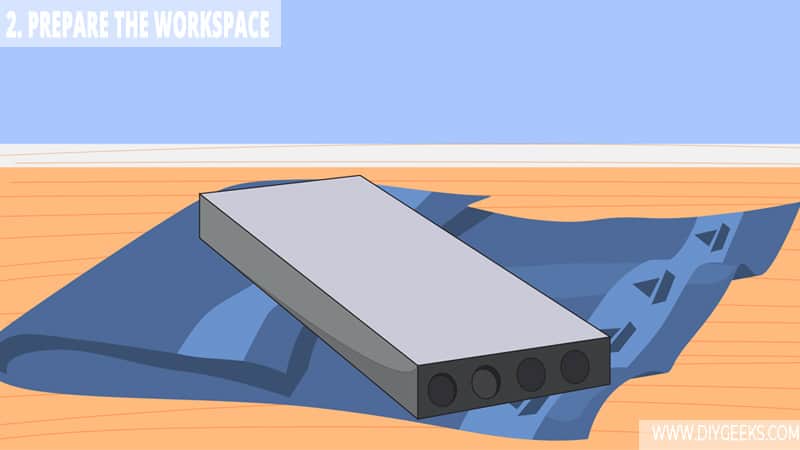
While the metal is drying, prep the workspace by removing (or covering) near objects to prevent paint spills over them.
Cover the floor with plastic wrap or a large drop cloth, especially wooden floors.
3. Scrape the Metal Finish (If Any)
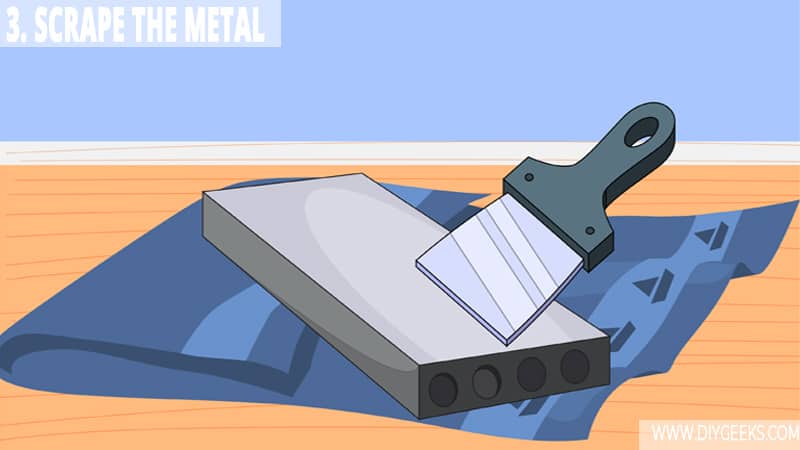
You must scrape (remove) the paint off if the metal surface is painted (or sealed).
To scrape the existing finish off, use a metal (or plastic) scraper. Just put the scraper under the paint, and lift it.
You can’t scrape off all the paint, but remove as much as possible. Use a paint-stripping product for the leftovers.
Skip this step if the metal isn’t painted (or sealed).
4. Sand the Metal
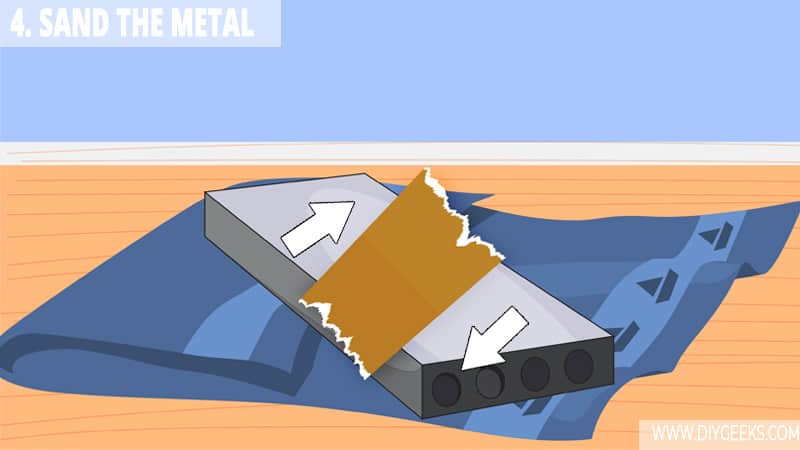
Use coarse-grit sandpaper (40-grit) to sand painted or sealed metal surfaces. The coarse-grit sandpaper will remove the existing finish.
Use medium-grit sandpaper (100-grit) to sand bare metal surfaces. Medium-grit sandpaper will remove imperfections and leave a smooth surface for primer (and paint) to stick to.
Re-clean the metal surface to remove dust after sanding it.
Note: Use wet-sanding instead of dry-sanding if you don’t want to scratch the metal surface.
5. Apply Primer
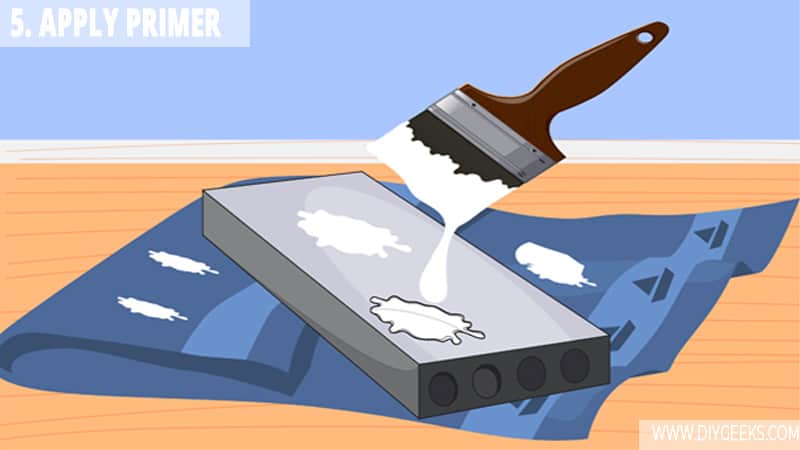
A primer coating will improve the adhesion between the latex paint and the metal surface by providing a textured layer between them.
The purpose of the primer coating is to cover imperfections, holes, and bumps, and provide a textured layer over the surface.
You need 2-3 coats of latex or self-etching primer on metal. Wait until one primer coat dries before applying the next one. Water-based primers take less than 1 hour (30-40 minutes) to dry between coats.
Note: Use a paint roller, brush, or sprayer to apply primer. Avoid using oil-based primer as it isn’t compatible with latex paint.
6. Apply Latex Paint
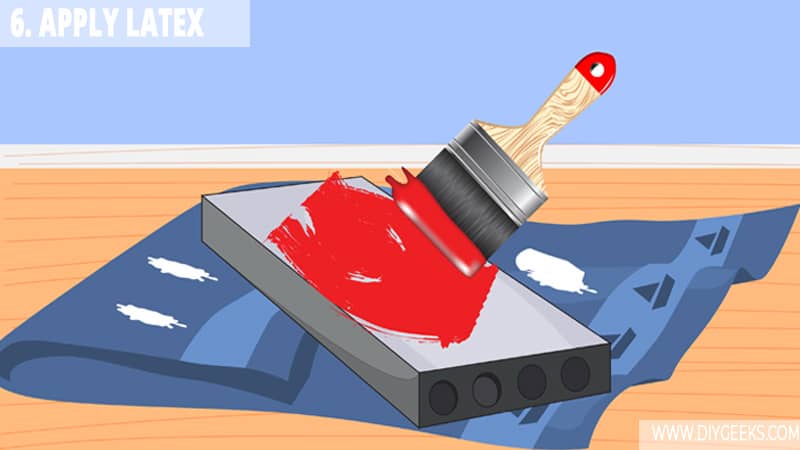
Apply three (3) coats of latex paint on metal using a brush, roller, or sprayer.
Thin latex paint with water in a ratio of 1:4 (1 part thinner, 4 part paint) if using a sprayer to apply it.
After the final coating dries, seal the finish with polyurethane or varnish. The sealers will produce a glossy moisture-resistant layer over the finish and protect it from moisture, water, and weather elements.
How Long Does Latex Paint Take to Dry on Metal?
Latex paint takes 3 hours to dry enough for a re-coat on metal surfaces. This gives the coating enough time to dry and harden to support additional coatings.
Latex paint dries fast because of its water-based nature. The solvent (water) must evaporate for the coating to dry. Since water evaporates fast, this means latex paint dries fast too.
If you re-coat too soon, the finish will turn sticky. That’s because the evaporation process will be stopped, and the solvent (water) still be stuck between the new and old coats. Since there’s still water on the old coating, the new coating won’t stick.
Related Read: How To Paint Concrete With Latex Paint?
Can You Apply Latex Paint on Metal Doors?
You can apply latex paint on metal doors but you must strip, clean, sand, and prime the metal door surface first.
Metal doors are durable in terms of security but not in terms of design. As a result, metal doors struggle to retain their look and design after the first few years. So to revive the look, you can use latex paint on the door, but you need to prep the door first.
If the door is painted (or sealed), you must remove its finish, apply a primer, and then paint it. That’s because the paint won’t stick to a sealed surface or an oil-based finish.
You must use a primer compatible with metal surfaces and latex paint. For instance, water-based primers are compatible with both. Also, for outdoor doors, you must seal the finish.
Can You Apply Latex Paint on Metal Sidings?
You can apply latex paint on metal sidings, but you must use a self-etching primer to improve the adhesion. Also, you must seal the finish with exterior polyurethane.
However, latex paint isn’t the best choice for metal siding because it doesn’t have the adhesive or protection features to protect it from weather elements. Instead, it’s better to use oil-based paint and an oil-based sealer to protect it from weather elements.
But, for indoor metal sidings, you can use latex paint. Indoor sidings won’t be exposed to weather elements, and latex is durable enough to protect them.


